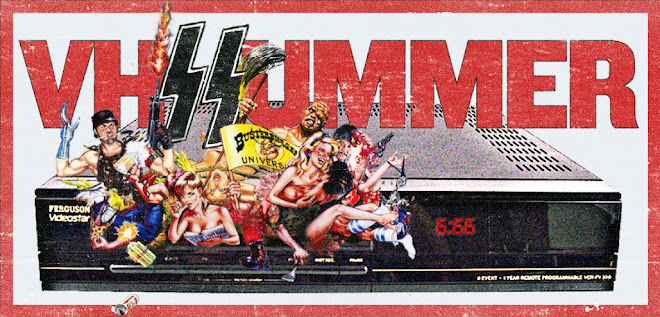
The moment this tape arrived I embarked on a bi-polar coaster ride for over a week before actually inserting it into my VCR. I was initially apprehensive because “Scream For Help” was an unlikely marriage of talents. Not that writer Tom Holland and director Michael Winner are diametrically opposed in terms of what they do. Both are responsible for some of my favorite films of all time. In fact, I’d categorize this pairing as a ferocious dream team. Unfortunately, in my experience, collaborations between two strong and talented personalities usually results in a big, fat let down.
You can call “Scream For Help” a success, but it doesn’t come near the sort of artistic achievement most typical people demand before calling a film “great." The dialog here broadsides out of left, frequently veering into unintentionally hilarious territory. The acting has the sort of speech fluidity you only hear on a “Learn To Speak English” tape. The score by Led Zeppelin’s John Paul Jones comes in tacky, jarring slabs. In fact most will notice that some of the later music cues wound up being used in Jimmy Page’s “Death Wish 3” score. The story itself feels like a compacted season of a soap opera, amplifying its outrageousness. All of these things combine to form a truly entertaining and engaging film. You'd have to have a petrified branch up your ass to not have fun while watching this.
Predating “The Stepfather” by several years, the story begins with a narrative by young Christie Cromwell who is convinced that her mother’s new husband, Paul Fox, is out to get them both. The opening moments of the film harkens to the spirit of innocent William Castle brand fun, ala “Thirteen Frightened Girls!,” but they eventually dump a wild bouquet of vulgarity, blood, tits, and sleazy sex into the mix that occasionally catches you off guard.
The accidental death of a maintenance man arouses Christie’s suspicion in her stepfather. She believes the fatal scenario was intended to claim the life of her mother. Christie decides to shadow Paul and soon uncovers an extramarital affair. Her friends eventually become entangled in her quest for proof, with lethal results. Here’s one of my favorite scenes from the film.
Fucking awesome!
Eventually, Christie convinces her mother of Paul’s infidelity with a little photographic proof. Soon after, Paul and his gang of homicidal conspirators invade the Cromwell mansion with a plot to kill mother and daughter and make it look like a burglary gone bad. The film has an ironic twist, as Christie defends her mother and bumps off the goons using a batch of methods derived from Paul’s earlier failed murder attempts.
Mince chunks of "Square Pegs," "


